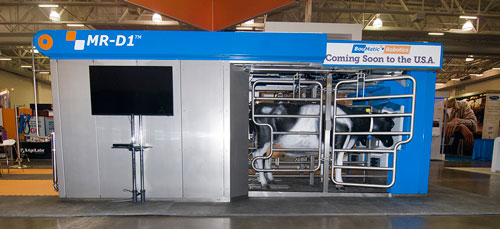
Five hundred robotic milking systems (RMS) are estimated to be in use in the U.S. today. As the total has grown, key management factors have emerged as "must do" priorities to optimize their value and effectiveness.
The list starts with honestly answering a crucial question, said Marcia Endres, D.V.M., an extension dairy specialist at the University of Minnesota, during her RMS seminar presentation last month at World Dairy Expo in Madison, Wis. That question is:
"If you are thinking about a robot, do you or your employees like working with cows, or do you have the attitude that you can put a robot in your barn and then go off and do other things? Well, think again. If you do not want to work with cows, a robot is not going to work," she warned.
Endres is part of a team doing ongoing research with 52 RMS dairies in Minnesota and Wisconsin that have up to eight robots each. After working with the owners for more than two years, she said management guidelines that are common among those who are successful are:
- Aim for 2.4 to 2.8 milkings per cow per day.
- Aim for five or less failed milkings per day.
- Have 1.5 hours or more of robot down time per day.
- Have fewer than 10 "fetch" cows per day.
- Aim for at least 4,000 total pounds of milk collected per robot per day, but strive for 4,500 or more.
- How cows are fed is crucial. "It can make or break your business," she said.
- The cost of maintenance and repairs on robots must not be taken lightly, particularly as they get older.








